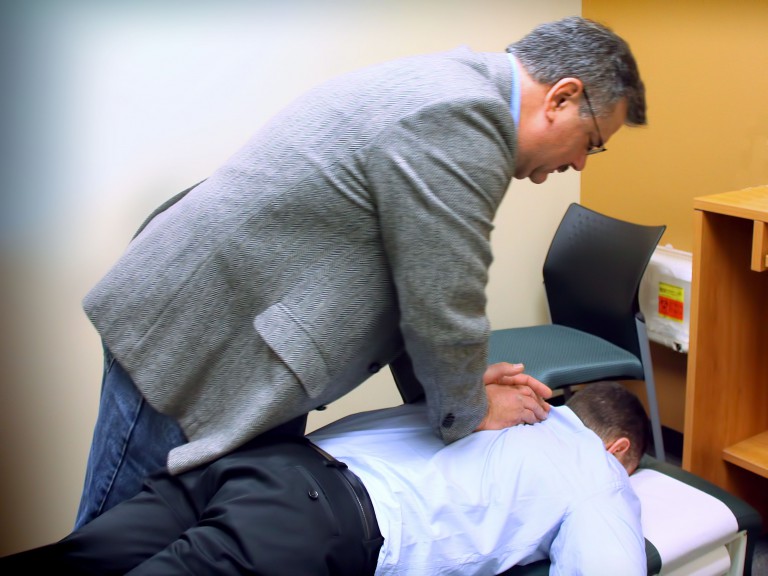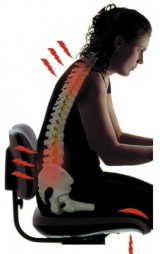Shoulder pain can affect much more than just our comfort. It can limit our ability to pick up our children, carry groceries, or even reach for something on a high shelf. If you’ve been struggling with nagging shoulder pain, there’s a strong possibility it may be due...
A stress fracture is a small crack within a bone. However, unlike acute fractures, which occur from a sudden injury, stress fractures gradually develop over time and are common among athletes, runners, and individuals with physically demanding lifestyles. These tiny,...
Tendons are tough, fibrous tissues that connect muscle to bone and play a critical role in our movement, from helping us swing a tennis racket to allowing us to lift groceries or climb the stairs. But for all their strength and flexibility, tendons are also...
What Does Spine Surgery Correct?

The human spinal column is as amazing as it is important. Nearly 30 bones, 23 discs, more than 120 muscles, 220 ligaments and more than 100 joints, working together to support the entire body, allow for movement and flexibility, and protect critical nerves.
Yes, the spine is amazingly important, which is why spinal cord injuries can be so incredibly debilitating.
Luckily, modern medicine has developed an array of innovative spine surgeries that can help people suffering from spinal pain live pain free or with significantly less pain, regain their active lifestyles and improve the overall quality of their lives.
Here is a look at some of the medical problems spinal surgery can correct:
Stress Fractures
As people age, the vertebrae in the lower back can become fractured as a result of everyday wear and tear. Initially, the stress fractures may not be painful or even noticeable. Eventually, however, the tiny fractures work together to weaken the vertebrae to a point where they are no longer able to maintain their proper positions and they shift out of place.
Stress fractures and the resulting shifting of vertebrae in the lower back can be caused by trauma from athletics, care accidents, heredity or the natural aging process. It can become extremely painful, causing leg weakness, uncomfortable tingling sensations in the legs and lower back, thigh stiffness and soreness when walking, running or exercising.
Disc Bulging or Rupture
The discs that lie between each vertebrae act as shocks—they absorb the energy created when the body shifts, protecting the vertebrae from hitting one another. As the body ages, or when its spinal cord is twisted or jostled in an unnatural manner, the discs deteriorate, which can cause them to bulge or rupture, both of which are extremely painful.
Orthopaedic surgeons can operate to fix or remove the bulging or ruptured discs, relieving patients of the pain and often allowing them to return to their active lifestyles.
Spinal Stenosis
Another painful condition that is attributed to heredity or the natural aging process is spinal stenosis. As people age, their spinal cords can begin to narrow. This can put intense pressure on the spinal column or cause the nerves that are usually protected within the vertebrae to leave the spinal column. It hurts and can be debilitating.
Fortunately, doctors are often able to relieve the pain by performing a bone graft, during which bones from other parts of the patients’ bodies are attached to living bone in the spine to stabilize and strengthen the entire column. Bone grafts result in some loss of flexibility, but it is an effective way to treat the pain associated with spinal stenosis.
Abnormal Curvatures of the Spine
Some people are born with spines that, for some reason, have abnormal curvatures. While this condition is not always painful, it can affect a person’s mobility and flexibility. Orthopaedic surgeons are able to help people living with abnormal curvatures of the spine by performing spinal fusions.
During a spinal fusion, bone grafts are added to the affected areas, offering strength and support for the entire spinal column. This not only improves people’s ability to move with more confidence, it can also treat the pain often associated with the condition.
There are other conditions related to the spine that orthopaedic surgeons are able to correct thanks to the marvels of modern medicine. To learn more about how surgery may be able to correct spine problems, contact an orthopaedic surgeon today.


